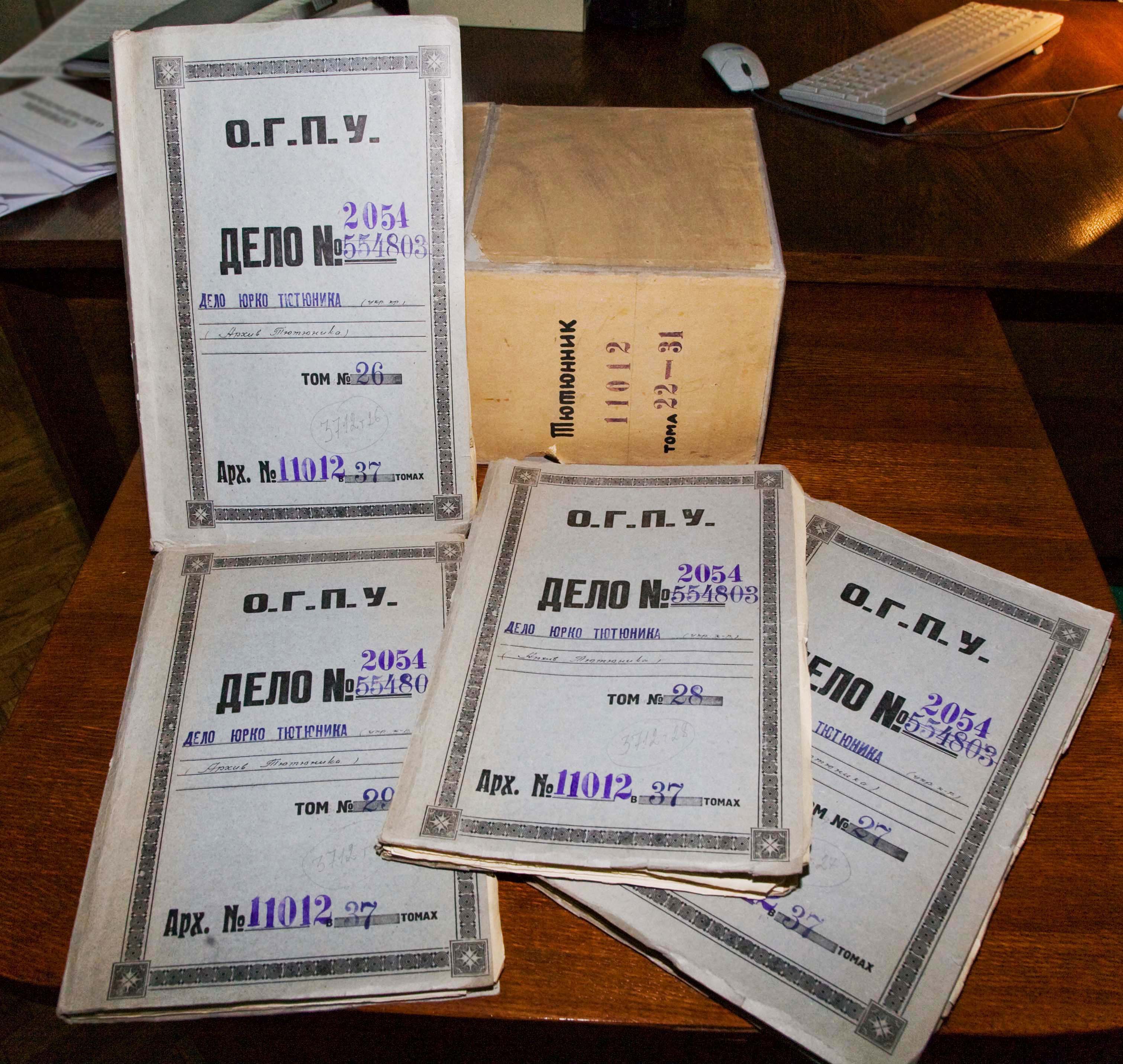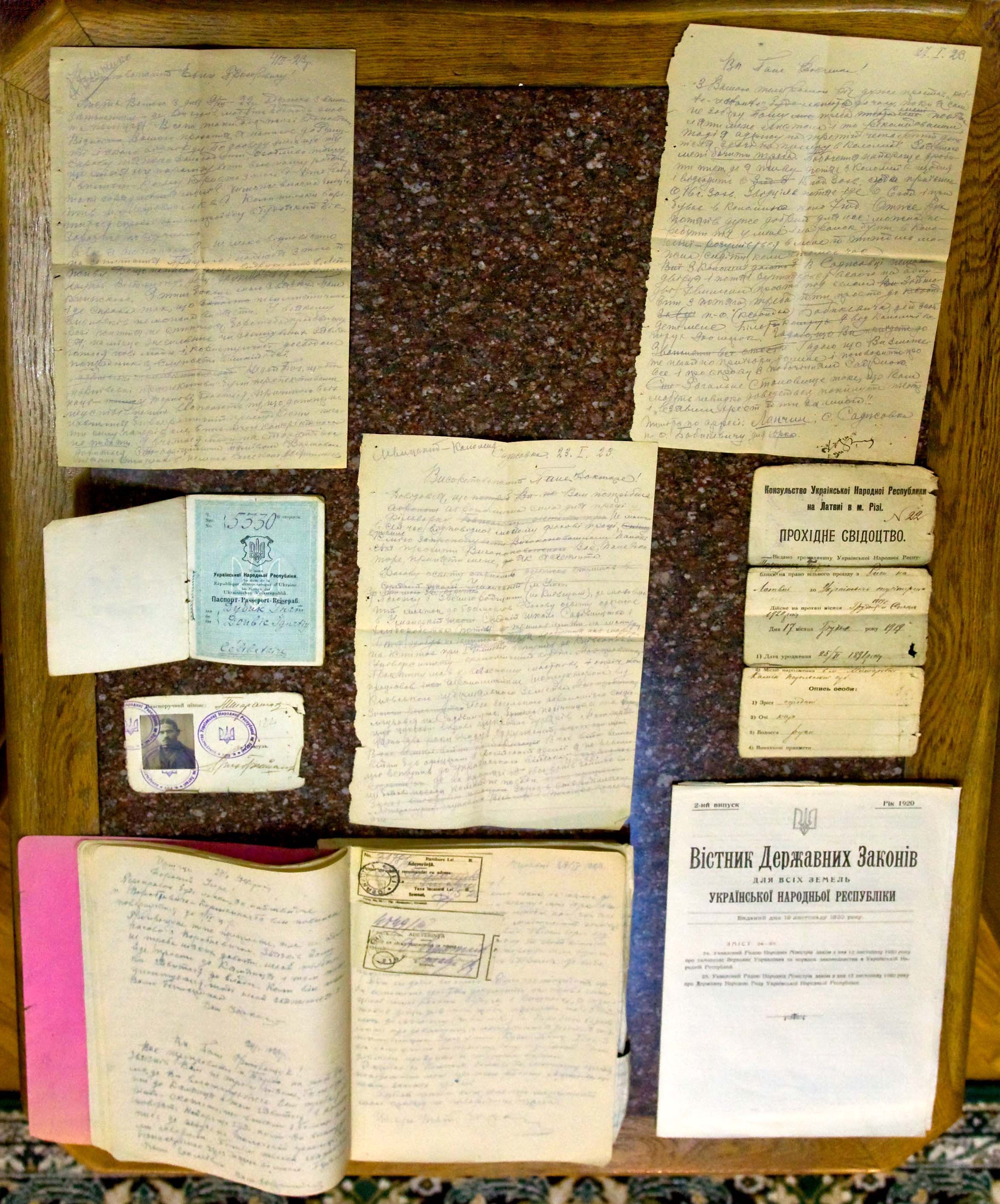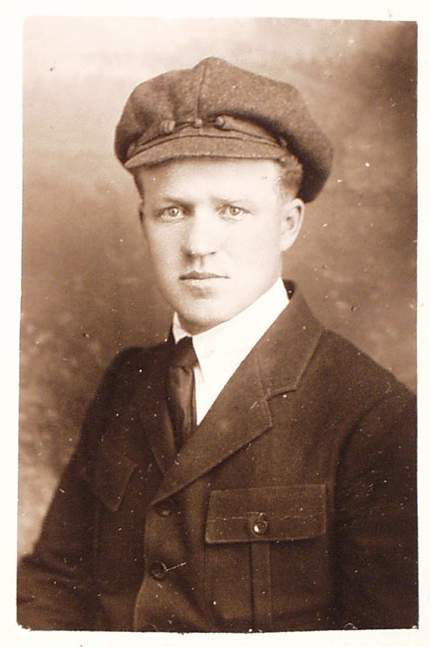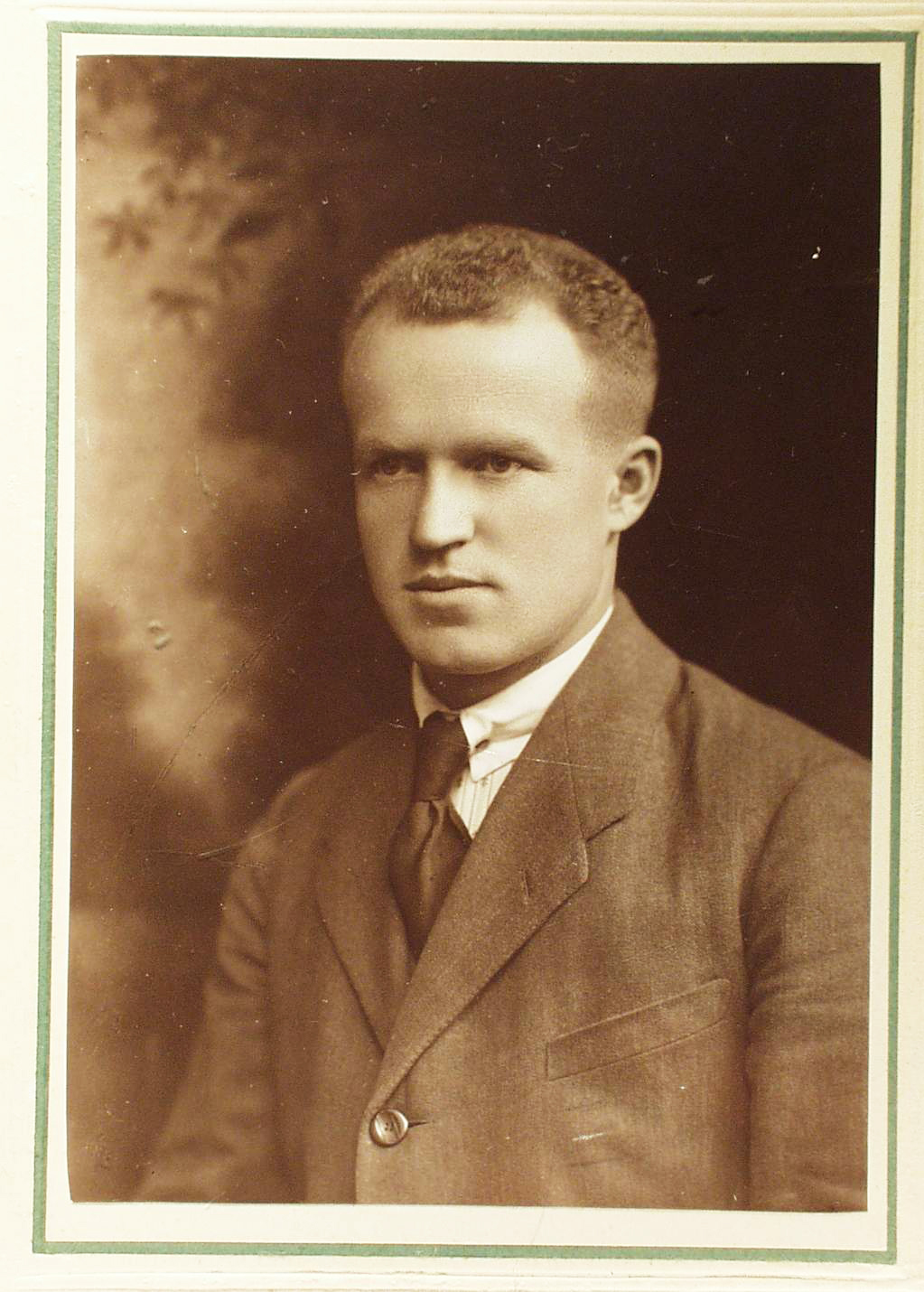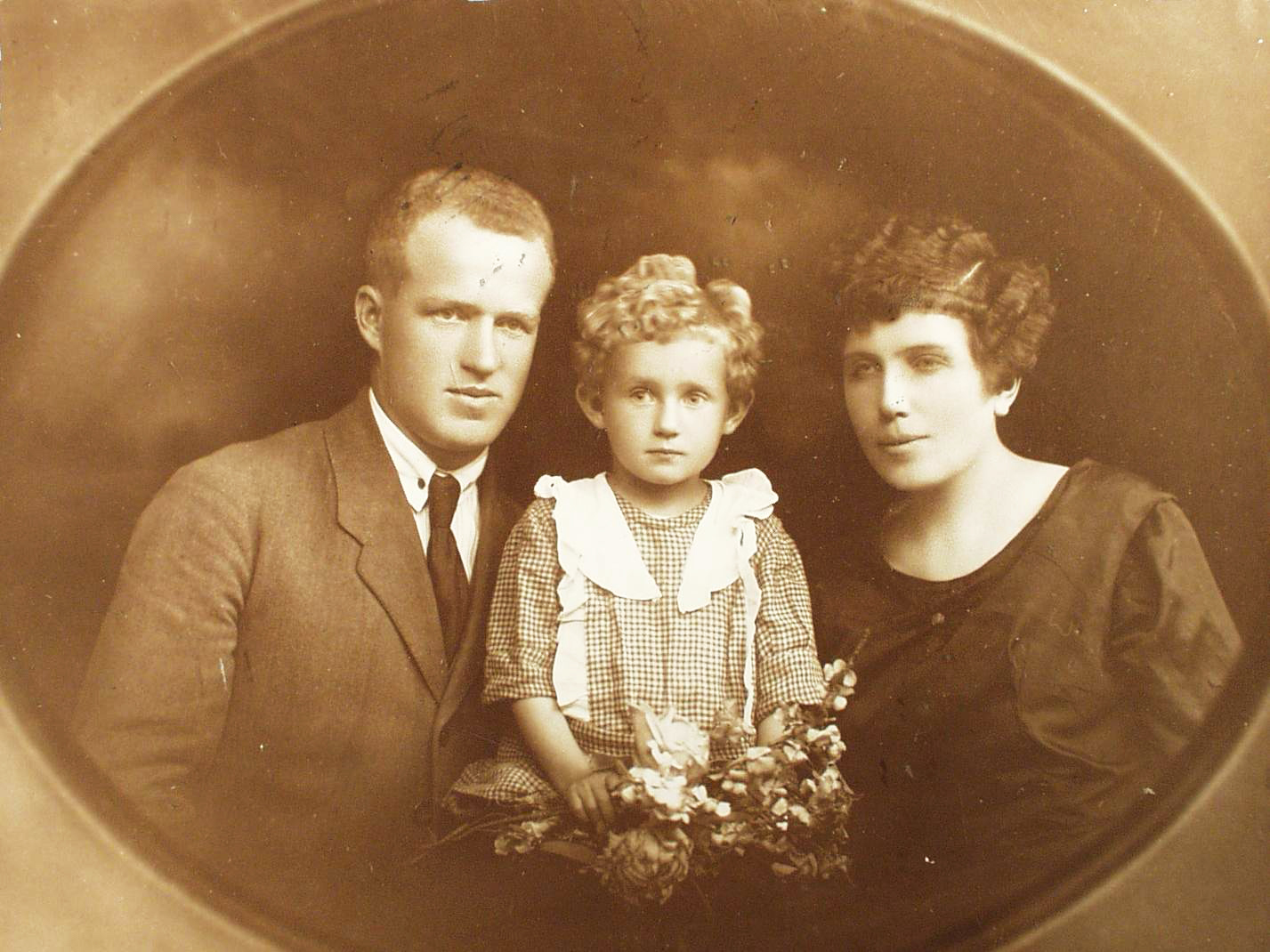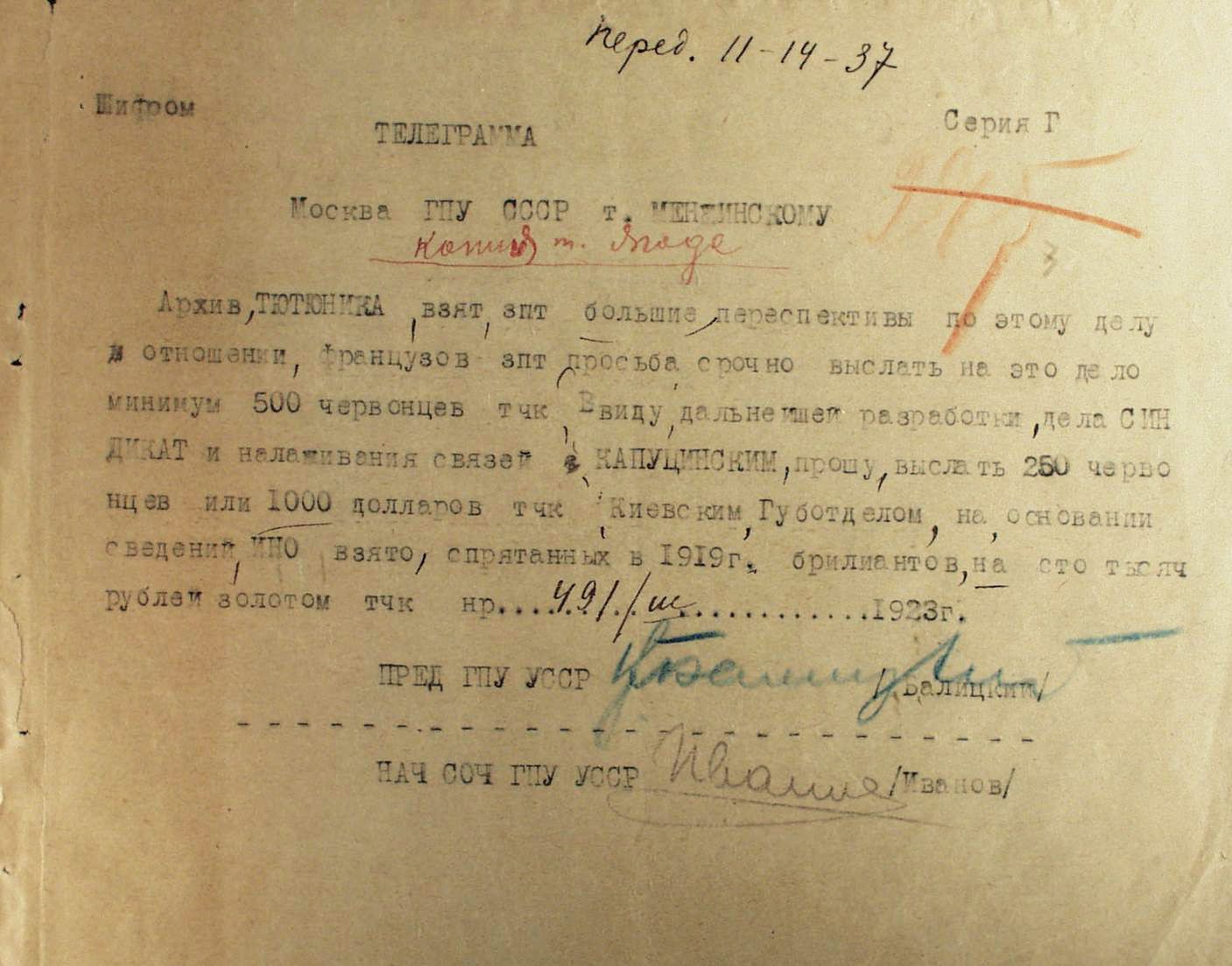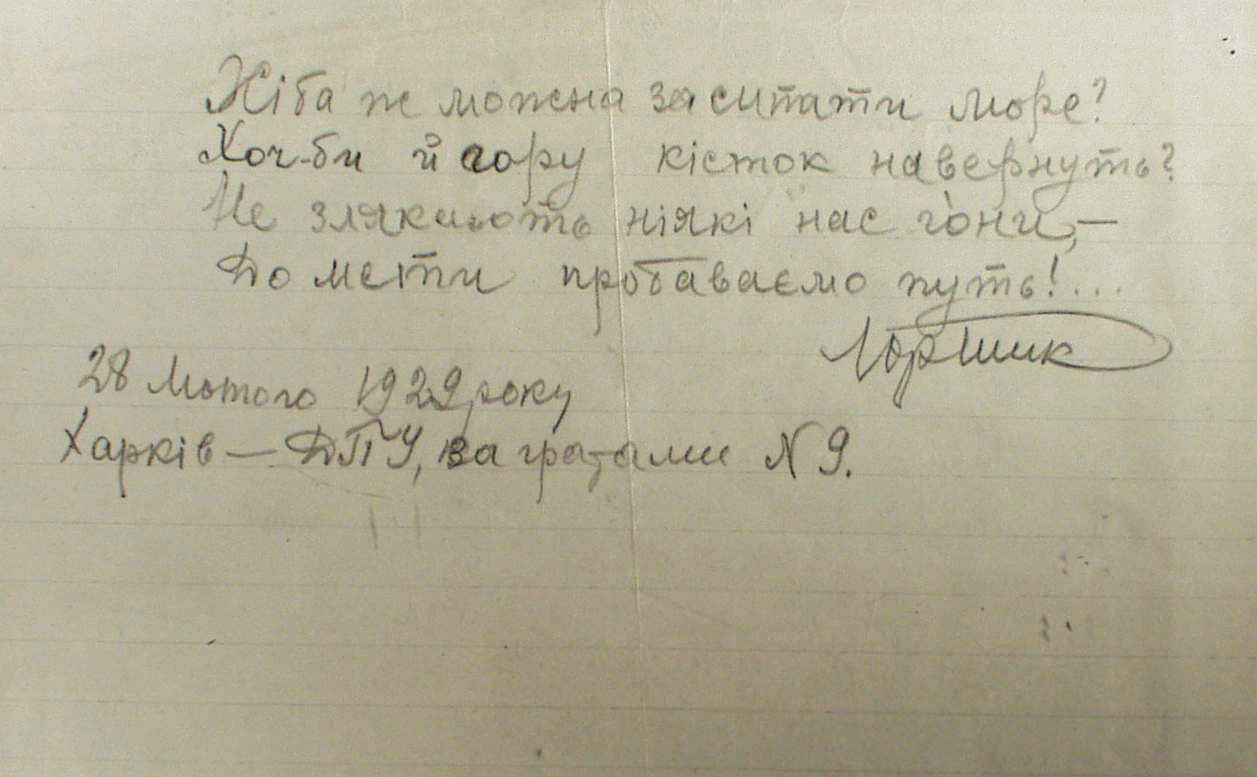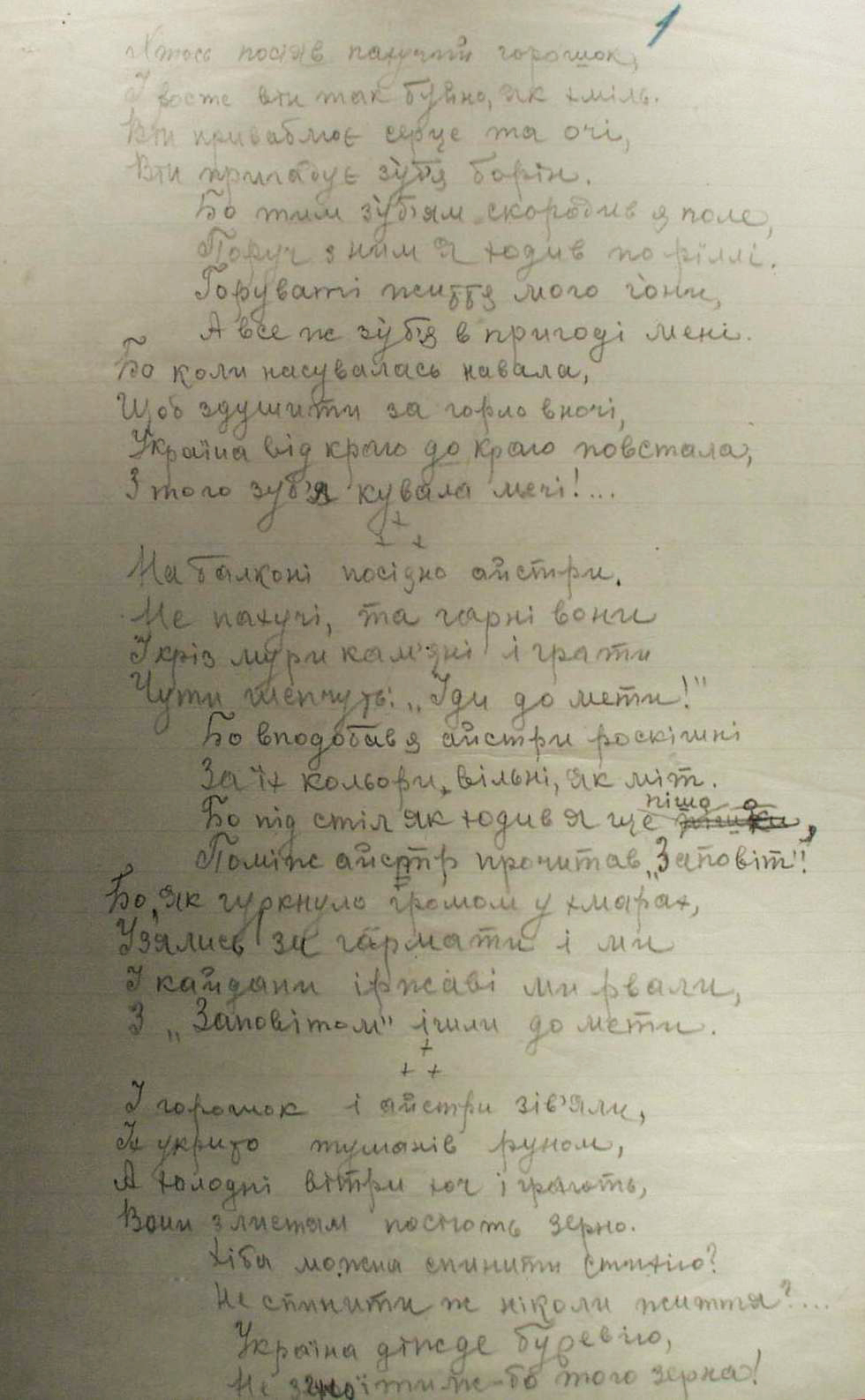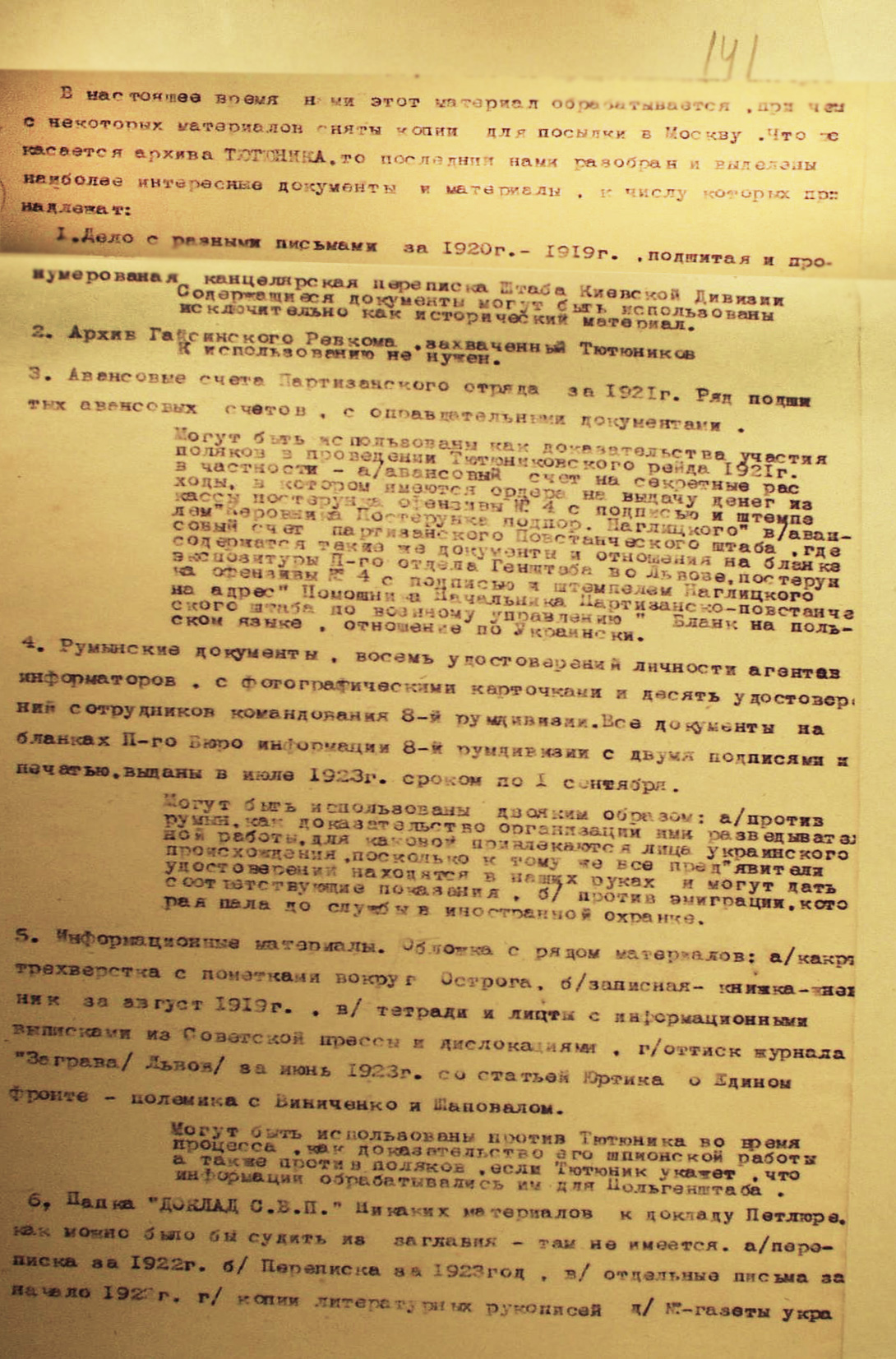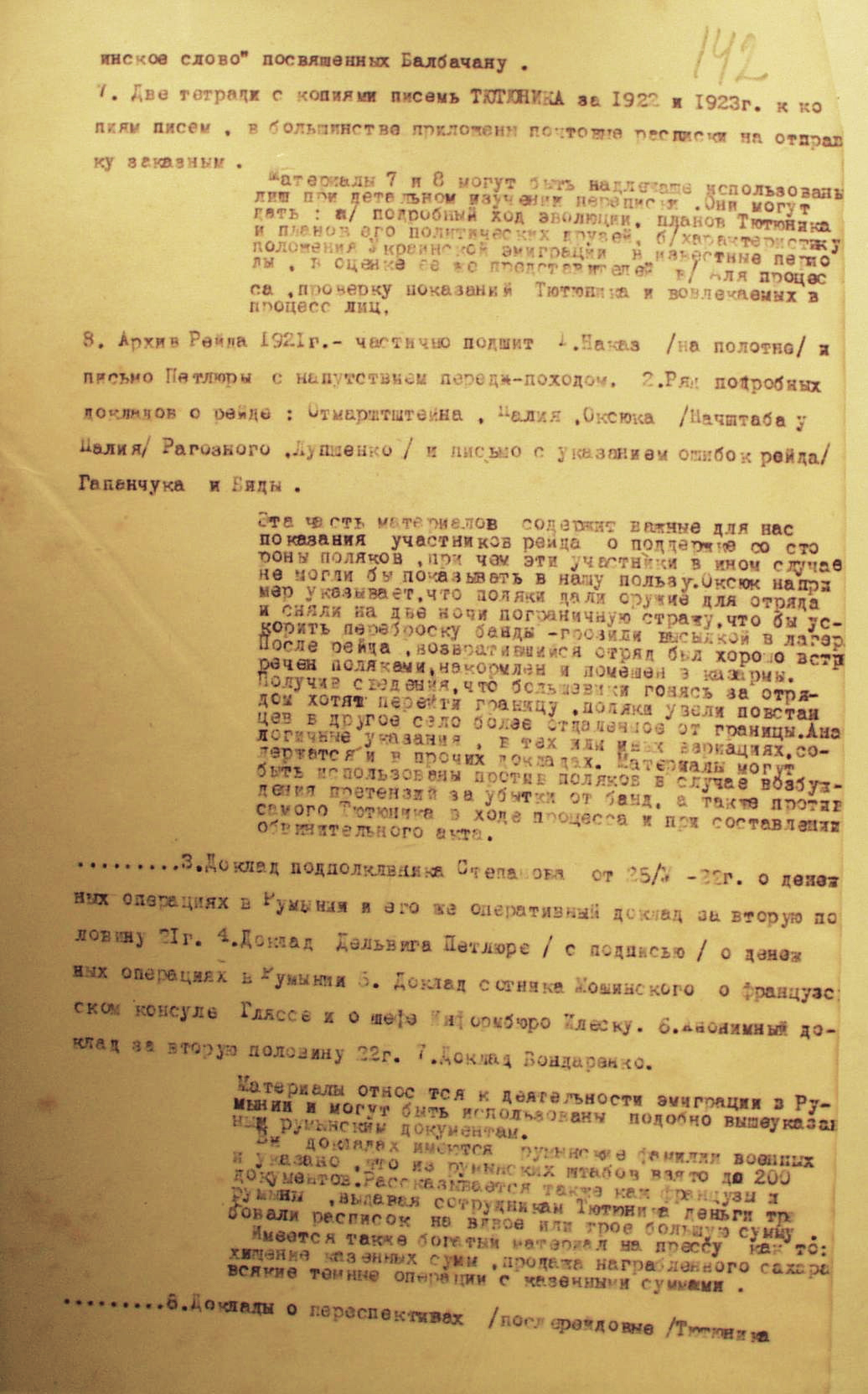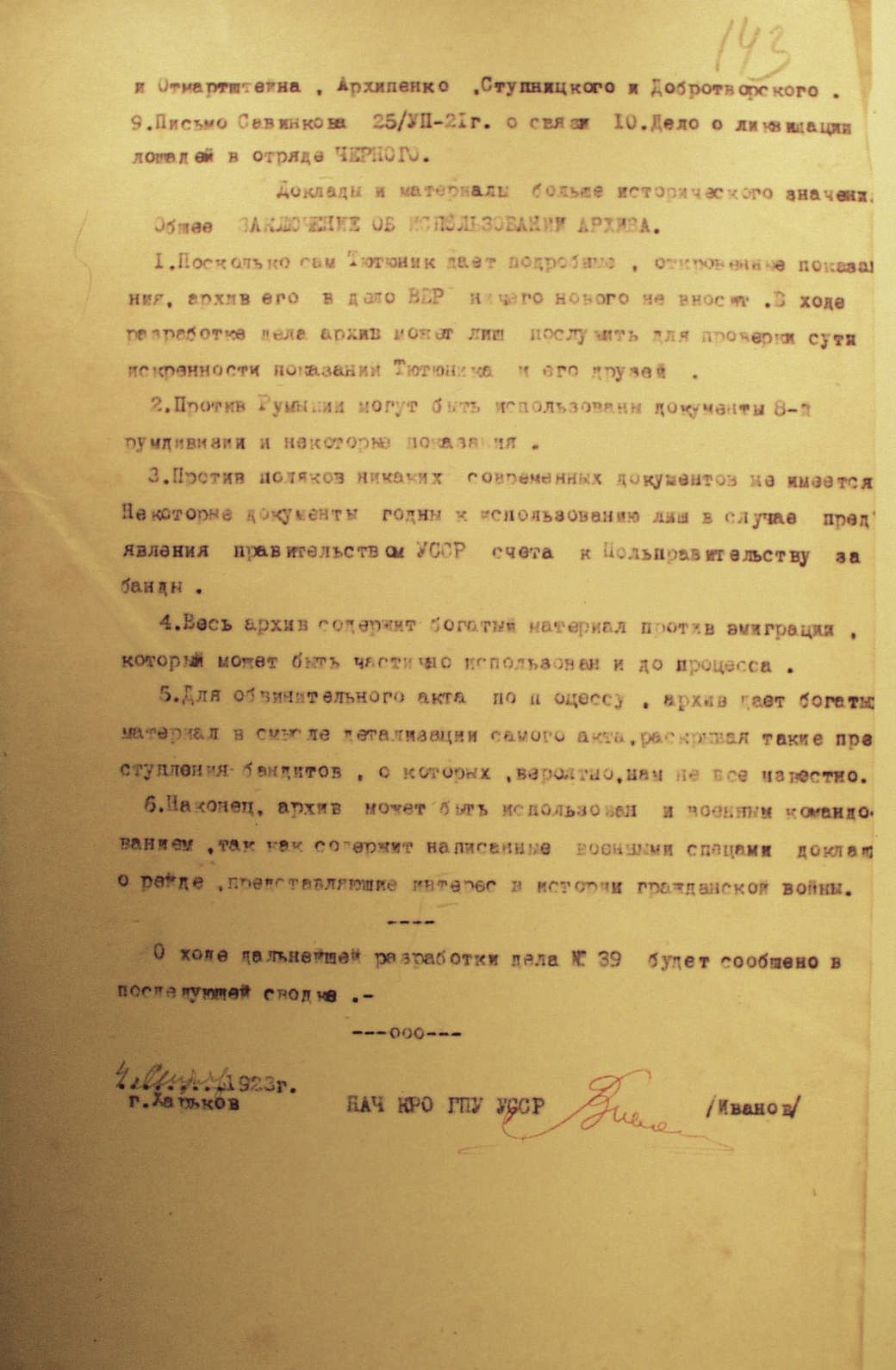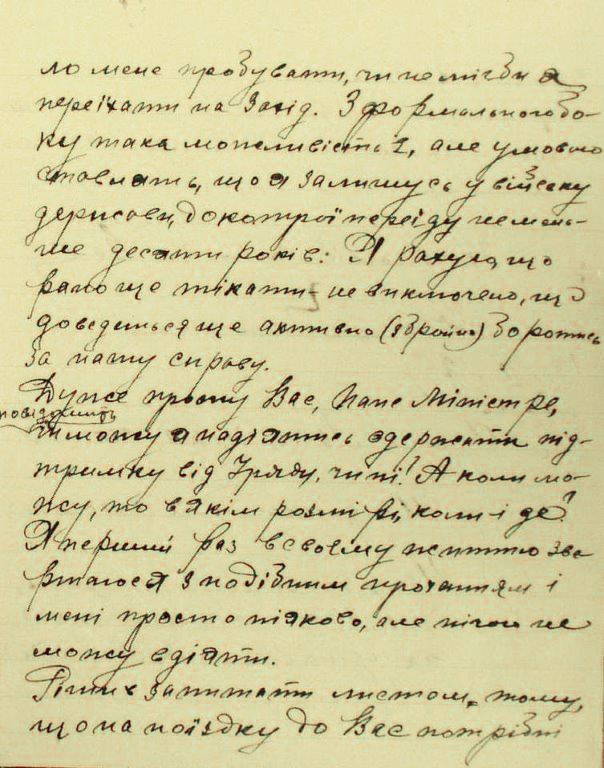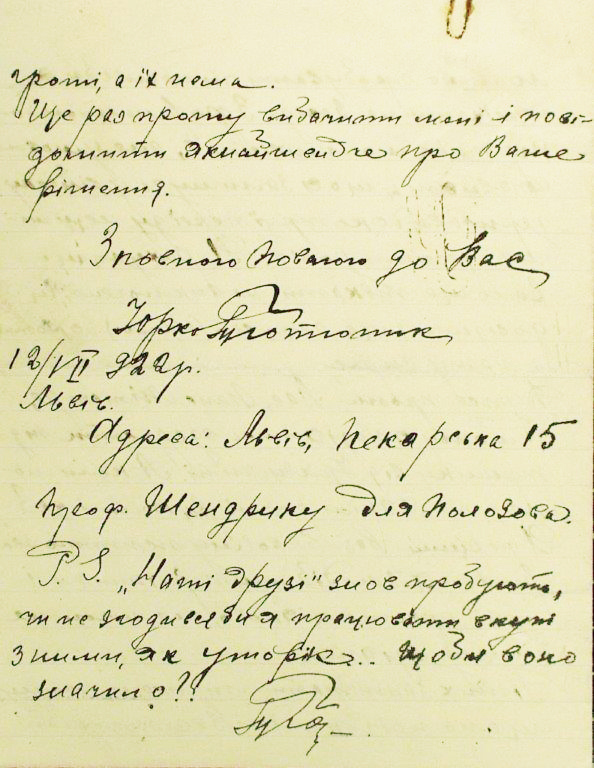General-Khorunzhyi of the Army of the Ukrainian People’s Republic Yurko Tyutyunnyk. Unknown Facts, Photos, Poems
4/19/2025
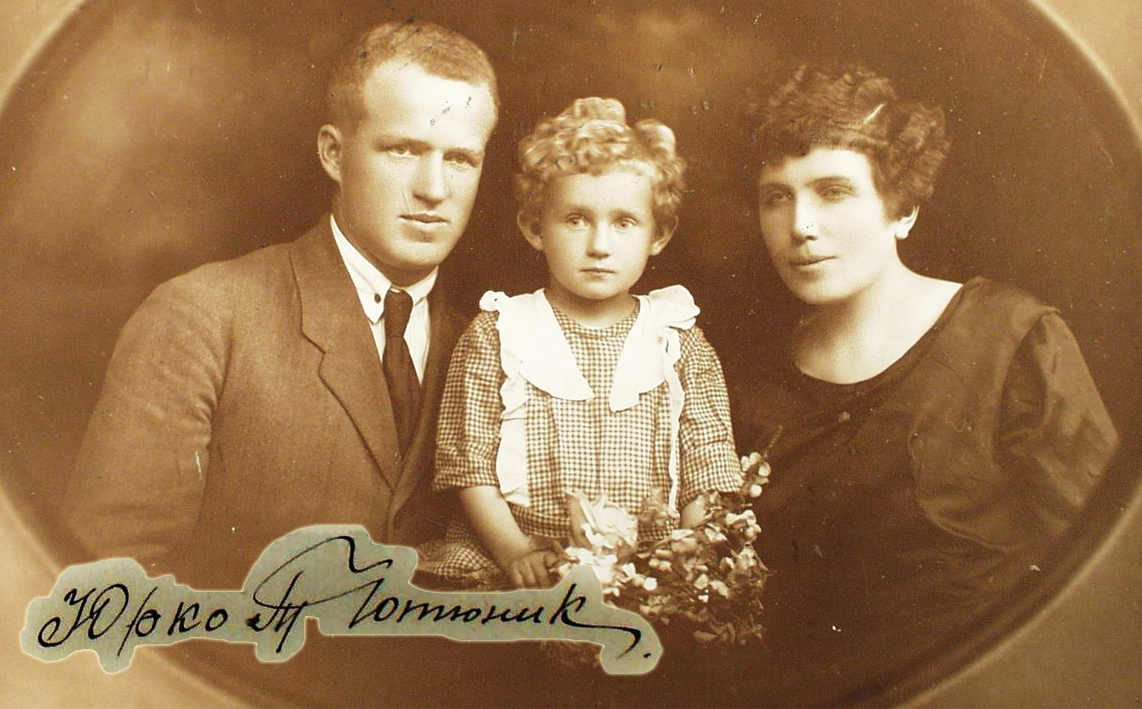
The archives of the Foreign Intelligence Service of Ukraine contain unique documents that reflect the activities of the Partisan-Insurgent Staff headed by Khorunzhyi General Yurko Tyutyunnyk, orders of the Army of the Ukrainian People’s Republic, originals and copies of the government’s documents, personal correspondence during his stay in exile and in Ukraine, his manuscripts of the book “The Winter Campaign of 1919-1920” and some articles, other materials on the Ukrainian liberation movement of the 20th century, as well as photos that have not been published until now.
All this was once contained in Yu. Tyutyunnyk’s personal archive and later came to the gpu of the Ukrainian ssr as a result of the chekists’ operation to lure the Otaman to Ukrainian territory and arrest him. After studying and declassification, electronic copies of 3712 documents on 5688 pages of multi-volume archival file were transferred to the Ukrainian Institute of National Memory. They formed the basis of a number of scientific articles, monographs, books and documentaries. According to experts, these materials are of great historical and cultural importance, and most of them are original, exclusive and very interesting. Repeated reference to these and other materials from the archives of the Foreign Intelligence Service of Ukraine and their additional study on the eve of Yu. Tyutyunnyk’s birthday made it possible to shed light on separate, hitherto little-known facts from his life and work.
Yuriy (Yurko) Tyutyunnyk was born on Easter, April 20, 1891, in the village of Budyshche, Kyiv province (now Zvenyhorod district, Cherkasy region). In the investigation case on Yu. Tyutyunnyk, there are notes about genealogy, childhood and adolescence and further growing up. He wrote them after his second arrest in 1929 in Cell 9 of the Kharkiv prison of the gpu of the Ukrainian ssr.
The documents read: “Born April 20 (old style) 1891, in the same village Budyshchi. My birth fell exactly on Easter, just when people at the church were having their Easter bread blessed.
There was a superstition in the village, people believed that the one who dies at Easter, without going through ordeals, gets straight to heaven. Lucky were those dead. And that is probably why my family was destined for good luck.
– Unheard! Unseen! He managed to be born exactly on Easter and even in the morning before the sunrise, chattered the villagers.
When I was born, my parents already had a good farm: two horses, a cow, some sheep... Everything seemed to foreshadow that I really was luckier than my older living three brothers and sisters.
My mother began to feed me, and I began to grow...”
Obviously, there were no photos from childhood. One of the very first, taken in his youth, was preserved in the archives of the FISU without reference to the date and place. Two other photographs, depicting him with his wife and daughter and him alone, were taken circa 1920. They must have always been with him, or in his personal archive.
Special attention in the file is paid to Yu. Tyutyunnyk’s personal archive. The chekists knew about that archive and wanted to capture it as well as the Otaman himself. In that archive there were orders, agreements, instructions, staff of government and military structures, payment and other financial documents, authorizations, letters, in particular copies and originals of Symon Petliura’s letters to government officials, reports, telegrams and other information from the period of the UPR Army’s First Winter Campaign.
Among the numerous documents, attention is drawn to the following: a copy of the UPR Agreement with Poland, Charter of the Office of the Head of the Directory of the Chief Otaman of the Troops and Fleets of the UPR, Law on Requisition for the Needs of the Troops of the Ukrainian People’s Republic in Wartime, draft organization of intelligence work in Ukraine, journals of meetings of the Council of People’s Ministers, appeal “To the Laudable Third Iron Rifle Division”, the initiative group’s appeal to restore the “Free Cossacks”, statistical information about natural resources of Ukraine and their exploitation, information about the armies of countries neighboring the russian federation (according to the bolsheviks’ information) and others. All this greatly interested the chekists, and they wanted to get the archive at any cost.
Besides, in the archive, the chekists hoped to find documents on Poland, Romania and France’s support to the Government of the UPR, material and financial assistance provided by those countries to the interned units of the UPR Army and Ukrainian Governmental institutions. They wanted to compose this information in a certain way and use it to prepare publications which would force the governments of those countries to deny further assistance to the leaders of the UPR State Center in exile.
One of the documents of the gpu of the Ukrainian ssr, prepared in July 1923 reads: “Summing up, it should be noted that our task for this operational cultivation is as follows: to compromise the Poles, Romanians and French as the ones opposing the soviet republics and interfering in their internal affairs, as well as to document that they, that is, their governments, spend money on supporting emigration and intervention. Then – to decapitate the emigration, to drag to our side the most dangerous (for us) elements, to compromise all the emigration in the eyes of Western European imperialists, on the one hand, and on the other hand, through propaganda to show emigrants that Poland and others use them mostly as espionage and bandit material. Apart from this, it is necessary to spread information through the use of a fictitious “VVR” (Vyshcha Verkhovna Rada [Supreme Military Council – Transl.]) that soviet national policy is fully consistent with the aspirations of small nationalities, in particular Ukrainians. In general, our most important task is to obtain documents” (FISU. – Case 11012. – V. 44. – P. 125).
Why exactly was Yu. Tyutyunnyk a “most dangerous element” for the soviet government? The answer to this question is found in the gpu’s documents of that time. One of them pointed out:.. “Tyutyunnyk’s group has absorbed the most combat-capable units of the 4th Kyiv Division, which were stationed in Kalisz (Poland) and did not succumb to demoralization, as well as the most qualified spy personnel who went through the school of Polish, Romanian and French intelligences. It was not by chance that this group was relied upon by the world reaction, hoping to use Polish officers and soldiers interned in Poland and Romania not only in subversive actions against soviet Ukraine, but also as the basis of the future “UPR Army”, part of the world reaction forces, which were preparing a new intervention against the country of soviets. All this led to our increased interest in the behind-the-scenes maneuvers of the Petliura counter-revolution” (FISU – Case 11012. – V. 43. – P. 47–48).
In addition to the information specified in this paper, Yu. Tyutyunnyk had extensive experience in military and political activities. He was a participant in the First World War. After the February Revolution, he took an active part in the Ukrainianization of units of the russian army. Soon he formed the 1st Simferopol Ukrainian Regiment. During the second All-Ukrainian Military Congress, he was elected a member of the Central Rada. During the Directory he was Commander of the Kyiv group of the UPR Army, Deputy Commander of the UPR Army. He was one of the initiators of the First Winter Campaign (December 1919 – May 1920), in which he participated from Day One to the last day. He did not lay down his arms after the internment of Ukrainian units in Poland. He headed the Partisan-Insurgent Staff, preparing an all-Ukrainian uprising and commanded the Insurgent Army in the Second Winter Campaign (November 1921).
Therefore, the chekists attached particular importance to the operation to capture and neutralize him. The operation itself is described in detail in numerous publications prepared on the basis of investigative and operational cases. But they contain inaccuracies and speculation. In particular, it is often said that before being captured, the Otaman “still in the boat was stunned in the boat either with a revolver handle or with an oar”. In reality, he was not. Archival documents point out that before crossing the river from the Romanian bank to the Ukrainian one to attend a meeting organized by the chekists of the mythical invented organization “Supreme Military Council” Yu. Tyutyunnyk to the last minute doubted whether it really existed and whether all that was not a trap. When at his request from the soviet side arrived Petro Stakhiv – a close to him person, by that time already a recruited by the gpu of the Ukrainian ssr agent, he took him aside and asked: “Petro, we will not let each other down. Is this “Supreme Military Council” not a fiction?” Stakhiv replied that the organization was real and the people in it were absolutely reliable.
After these words, Yu. Tyutyunnyk, as stated in the archival documents, got into the boat and gave the command to cross the river. They got to the other bank without incident, and when the Otaman was suddenly attacked on land by the chekists, who were hiding in an ambush, he fainted from surprise and severe shock. He was unconscious for two hours.
But there was more to the operation than just capture and arrest of Tytyunnyk. It was a large-scale operation to eliminate the entire Ukrainian national liberation movement inside the Ukrainian ssr and abroad and its armed resistance, to sow despondency, introduce discord, compromise Petliurism as a phenomenon and discredit the Chief Otaman himself – Symon Petliura.
Many researchers point out that the checkists’ main target in the operation was Symon Petliura. Such measures with using Yu. Tyutyunnyk were taken both, during the life of the Chief Otaman, and after he was killed in 1926 in Paris. At the same time, some archival documents of the period show that in 1923 the chekists also considered the possibility of getting through with S. Petliura.
Here is the list of tasks from the document signed in 1923 by the chief of the counterintelligence department of the gpu of the Ukrainian ssr Ivanov: “The Warsaw resident should know that our main task is to throw down Petliura, and best of all, of course, to capture Petliura and bring him to Ukraine, as we did with Tyutyunnyk. To this end, Petliura needs to be isolated, preparing the ground for offering him a meeting with the head of the VVR at the right psychological moment somewhere on the border, on the territory of Ukraine or Poland. In the meantime, rumors should be spread that he and his supporters do not know Ukrainian reality, and that they should come to work in Ukraine...” (FISU – Case 11012. – V. 44. – P. 125).
However, as shown by the case file, that plan was not implemented in 1923. After Yu. Tyutyunnyk was lured to the territory of the Ukrainian ssr and arrested, the next stage was bringing from Romania the Khorunzhyi General’s personal archive. The Chekists forced him to write several letters. One – to the lawyer who kept the archive, another – to his wife, who had the key to the suitcase with documents, the third – to a friend who was supposed to assist in the delivery of the materials across the border. In the end, the gpu found smugglers, paid them some money, and they brought the archive to the territory of the Ukrainian ssr.
After the materials were brought to Kharkiv, the then capital of the Ukrainian ssr, the gpu began to study them. As a result of thorough analysis, a conclusion was drawn that most of the documents were of historical value and could be useful for researchers, as well as for the military, since they contained stories about hostilities in the conditions of a long raid in the rear. First they got interested in the folder entitled “Report to S.V.R.”. But there were no reports to Symon Petlyura in it. However, from the chekists’ point of view, some other materials could be used to accuse Yu. Tyutyunnyk of anti-soviet counter-revolutionary activity or to persuade him to give up further struggle. They also found what could be used “against Poland and against Romania”, as well as a large number of Yu. Tyutyunnyk’s handwritten literary works and letters.
It is Yu. Tyutyunnyk’s letters that do impress. Most of them date back to 1919-1923. The letters reflect the views of the Khorunzhyi General and his associates on Ukrainian statehood, the situation of Ukrainian political and military emigration in Poland and Romania, the activities of Ukrainian public and political organizations abroad, the conduct of anti-Bolshevik struggle, personal contacts and family life.
Among the documents there is the full text of a handwritten poem, which Yu. Tyutyunnyk wrote on February 28, 1929, while in the Kharkiv prison of the gpu, and signed with his literary pseudonym “Yurtyk”. That was his second arrest. For his open anti-soviet views and for not fully revealing to the chekists an underground network in Ukraine, which he had been creating before his arrest in 1923. In open sources, only the last verse is given, as a short poem. The full text is as follows:
Someone sowed fragrant peas,
And they grow as violently as hops.
They attract the heart and eyes,
They remind of the teeth of harrows.
For I harrowed the field with those teeth,
Next to them I walked on arable land.
My life was hard,
And yet those teeth did me good.
For when the invasion was approaching,
To strangle by the throat at night,
Ukraine from edge to edge rebelled,
And forged swords from those teeth!...
Asters are sown on the balcony.
They do not smell sweet, but they are beautiful.
Through stone walls and bars
They whisper: “Pursue the goal!”
Because I liked luxuriant asters
For their colors absolutely free.
For when I was a little kid,
Among the asters I read the “Testament”.
For when the thunder clapped in the clouds,
We took the guns and cannons,
And we broke the rusty shackles,
With the “Testament” we pursued the goal.”
Both, the peas, and the asters have wilted,
They are covered with the fleece of the fogs,
And the cold winds, though they play,
Along with leaves they will sow grain.
Is it possible to stop the force of nature?
Life cannot be stopped, can it?...
Ukraine will live to the storm,
That grain can’t be rotten!
Is it possible to fill the sea?
Even with a mountain of bones?
Nothing can intimidate us, –
We are opening the way to the goal!...
(FISU. – Case 11012. – V. 37. – P. 1).
Here is an excerpt from one of Yu. Tyutyunnyk’s works: “Life itself without regret throws into the trash the ideologists of “fraternal co-existence”. He, whose soul is still alive, rushes to the aid of the already existing front, instead of disserting under the banner of mystical fronts and does not toy with “centers”, which, without national dignity, seek salvation where the shackles for Ukraine were forged and are forged” (FISU. – Case 11012. – V. 42. – P. 359).
These prose and poetic lines are written in different periods of Yu. Tyutyunnyk’s life, with about ten years between them, but they clearly trace the author’s life credo, his pain, his love for Ukraine, and caring about its fate. And these lines testify that the arrests, the numerous chekists’ attempts to break him, to change him, to play on his weaknesses did not destroy his national identity.
In total, more than 2000 documents written by Tyutyunnyk have been found in the archive of the Foreign Intelligence Service of Ukraine. They are of extremely great scientific, socio-political, and political importance and are still of interest to researchers, as they restore the objective historical memory of a most famous, but at the same time controversial figure of the Liberation Struggle for Ukraine's independence, of the events of a century ago, and allow us to see yet again that the enemy is cunning and insidious, and the struggle for independence is never easy or bloodless.
